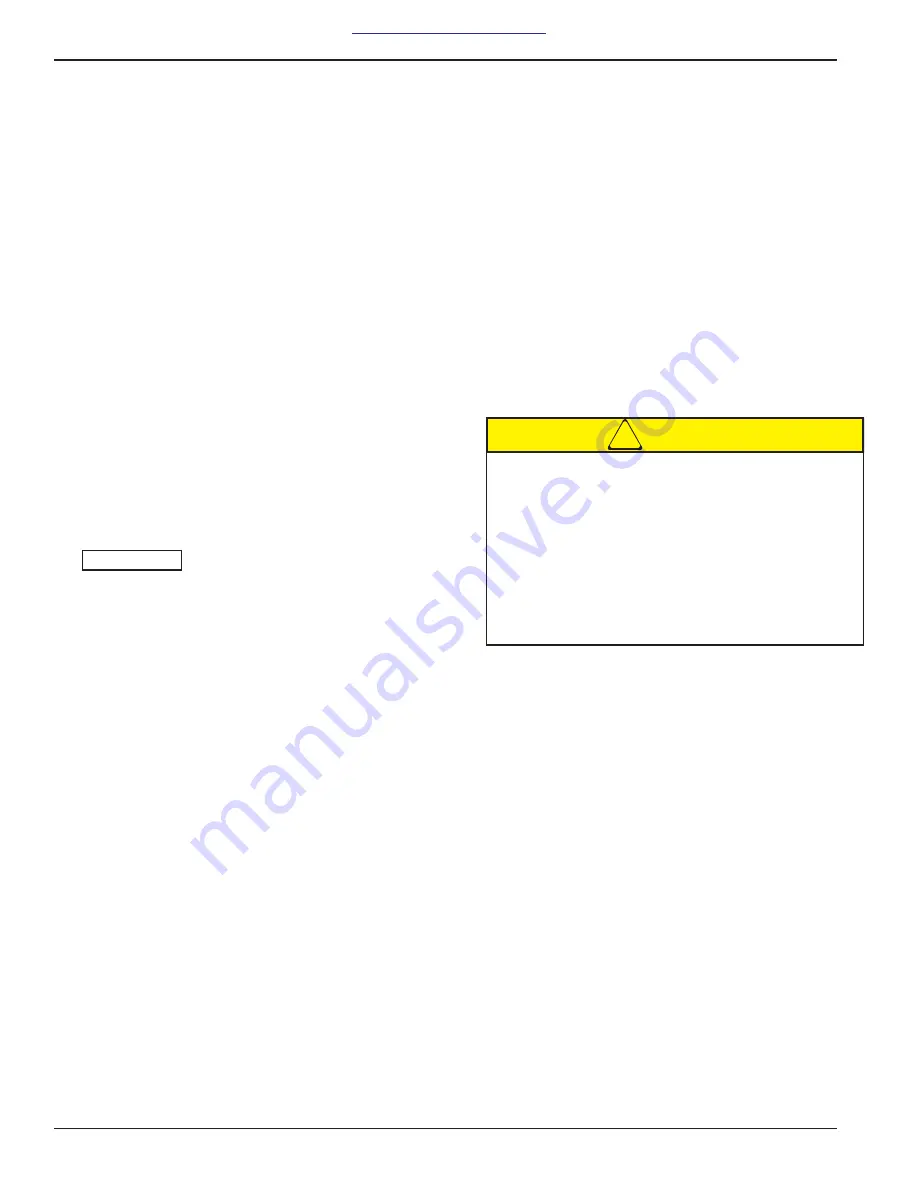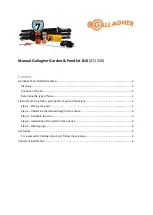
4-12
F-894-0919
OPERATION AND MAINTENANCE
Turning On the Headland
The recommended turning procedure for the 7833 HSL
on the headland is to tilt the rear of the machine upward
(red circuit), so that the weight of the entire machine is
riding on the front gauge wheels and tires.
1.
Tilt the rear up only far enough that all of the blades
disengage the dirt. Tilting the HSL much over ten
(10) to fifteen (15) degrees while turning on the
headland exposes the wing fold cylinders and the
machine at large, to possible damage as well as
lengthens the time it takes to turn around.
2.
Tilt the HSL rear up only enough to get the blades out
of the dirt. Setting the tilt up on a timer can be
beneficial. Once the turn is completed lower the HSL
back into the field by reversing the tilt cylinder (red
circuit) until it is fully extended. The large tilt cylinder
must always be fully extended during field operation.
Having the tilt cylinder fully extended in the field
allows:
•
The HSL full rotation over its lateral axis, ten (10)
degrees either side of running level, front to rear.
•
Is required to allow the Draft Compensator
System to operate by design.
IMPORTANT
When lowering the HSL back into working mode, it is
imperative the large tilt cylinder be fully extended. If
the large cylinder is not fully extended, the main
body of the HSL will not be free to rotate fore to aft
and follow the lay of the land.
Draft Compensator System
for the Conventionally
Operated HSL
The draft compensator system is designed to allow the
7830 series HSL to operate with equal down pressure on
the front and rear gangs. Because of the compactness
(front to rear) of the HSL, there can be a tendency for the
rear gangs to pull up if it were not for the action of the
draft compensator circuit.
The draft compensator system is designed to utilize a
closed circuit, comprised of a single acting cylinder,
powered by a nitrogen gas filled accumulator. The single
acting cylinder pushes against the hitch top link; a pre-set
amount relative to the size of your HSL.
The draft compensation system functions as a
mechanical spring but has a relatively flat force curve
over the entire distance of the tilt slot, unlike a
mechanical spring.
The result is that the HSL is free to roll over its lateral axis
ten (10) degrees forward or ten (10) degrees reward
relative to the lay of the land, and simultaneously
maintain equal down pressure on the front and rear
gangs.
The circuit pressure has been set at the factory and
should not be plugged into the tractor unless:
1.
The operator desires to adjust the circuit.
2.
There is for some reason a volume of oil that has
been lost from the otherwise closed circuit.
3.
Because of temperature changes or operating
factors, the circuit needs to be maintained. When the
circuit is plugged into the tractor there is always a risk
of a change in oil volume in the circuit. After the draft
compensation circuit is adjusted or maintained, it
should always be un-plugged from the tractor
immediately following the adjustment.
CAUTION
•
The pressure gauge indicating the stored energy
within the system should be checked daily when
the draft comp cylinder is fully extended (mast
cylinder pin is at its most forward position in the
mast slots.)
•
The pressure in the system should be
maintained at or above 1,100 psi depending on
the requirements for your size and model.
•
The folding and unfolding operations depend on
the draft compensator cylinder holding the tilt
cylinder rod end into the forward most (and or
lowest) position of the slot in the mast plates
when unfolding. The pressure of the draft
compensation circuit should stay relatively
constant but will vary some due to temperature
changes. The nitrogen gas that powers the circuit
is an inert gas and its volume and subsequent
pressure is subject to the ambient temperature.
The draft compensation hydraulic circuit should
be respected as should all hydraulic circuits. The
draft compensator circuit however is connected
to a significant source of stored energy. Even
when the tractor is shut down and or
disconnected, there are potentially several gallon
of hydraulic oil stored at high to very high
pressure. Be sure that you understand the circuit
and the dangers it presents before opening any
of the hoses or adapter fittings.











































